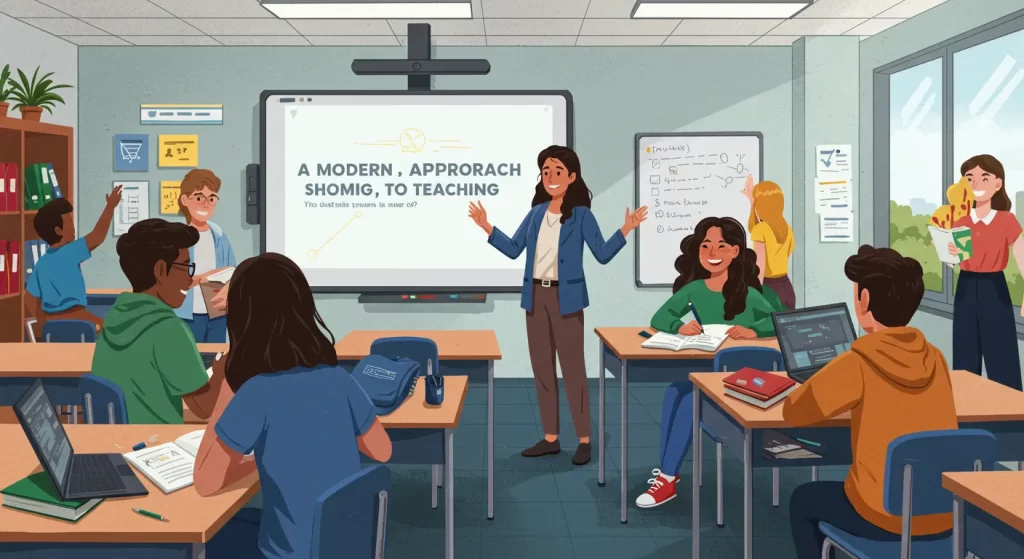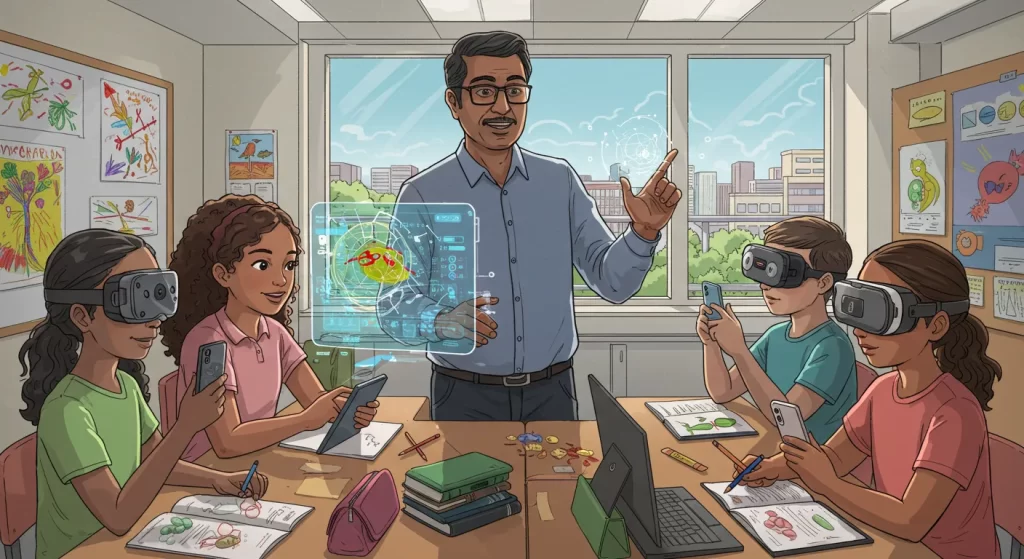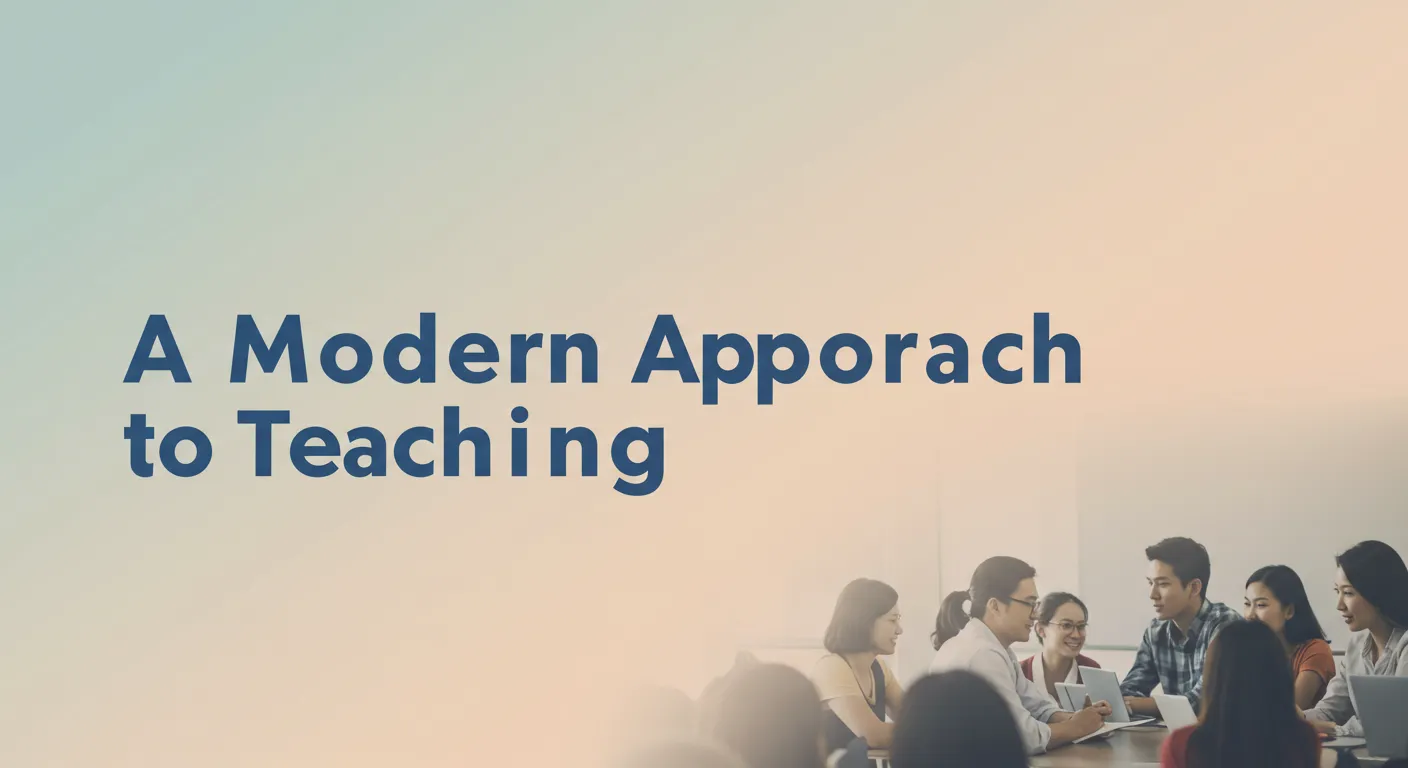Table of Contents
The way we approach teaching has evolved dramatically over the years. While traditional methods of instruction have been effective, the modern classroom, specifically the Classroom 15X model, takes a different approach, incorporating hands-on learning experiences that engage students in new and exciting ways.
This innovative method combines educational theory with real-world application, allowing teachers to bring everyday objects and experiences into the lesson plans. In this article, we’ll delve into the concept of Classroom 15X, its benefits, and how it is transforming the way we educate students today.
The Concept of Classroom 15X
Classroom 15X refers to an advanced approach in teaching where the environment, curriculum, and teaching strategies are significantly enriched to enhance student learning. This method is about creating dynamic classroom experiences that go beyond the basic curriculum.
Teachers are encouraged to bring in real-life materials such as rocks, plants, or even everyday tools to illustrate scientific principles, mathematical concepts, and much more. These real-world items serve as educational tools, helping students connect theoretical knowledge to practical use, fostering a deeper understanding of the world around them.
One example of Classroom 15X in action could be a science lesson where a teacher brings in a plant to explain photosynthesis. Instead of simply reading about the process in a textbook, students have the chance to observe the plant’s leaves, study its structure, and engage in hands-on activities that make the lesson tangible.
The Role of Hands-On Learning in Classroom 15X

Hands-on learning is at the heart of the Classroom 15X concept. Teachers use everyday items not just for their intrinsic value but also to serve as teaching tools that enhance student engagement.
This method can make a lesson feel more like an interactive experience rather than just a traditional lecture. By involving objects that students can physically interact with, the learning process becomes more memorable.
Take the example of using a rock to explain geological processes. When students hold a rock and observe its texture, color, and weight, they begin to form connections with the information being taught.
The physical interaction with the object helps solidify their understanding of concepts like erosion, sedimentary layers, or mineral composition. This technique aligns with the “learn by doing” philosophy that has been proven to improve retention and comprehension. Click To Read More: Followers of Genghis Khan
The Impact of Visual and Physical Learning
In the modern classroom, visual and physical learning is essential. Many students struggle with purely theoretical concepts because they don’t see the real-world applications. This is where the Classroom 15X model shines.
By incorporating physical objects into lessons, teachers cater to a wide range of learning styles. Some students are more visual learners, while others may benefit from physical or tactile learning experiences.
For example, in a math class, instead of using abstract numbers and formulas alone, a teacher might use objects like blocks or measuring cups to demonstrate fractions, addition, or subtraction. This tangible approach makes abstract concepts more accessible and easier to understand for students who might otherwise find these ideas too abstract.
Real-World Connections with Classroom 15X
One of the most significant benefits of Classroom 15X is its ability to connect lessons to the real world. In many traditional classrooms, students may wonder, “Why do I need to learn this?” or “How will this apply to my life?” The hands-on approach answers these questions by showing students how the knowledge they’re gaining connects to real-life situations.
Also Read: Exploring the Classroom 15X Concept: A Modern Approach to Teaching
For instance, if students are learning about economics, a teacher might bring in actual money or coupons to demonstrate principles of supply and demand. Alternatively, they might explore business concepts by using everyday items such as receipts or advertisements. This gives students an immediate context for what they’re learning, making the subject more relevant and engaging.
Classroom 15X and Technology Integration
Another vital aspect of Classroom 15X is the integration of technology. Teachers in this model not only use physical objects but also incorporate digital tools and resources to create a more interactive learning environment.
From virtual field trips to online educational games, technology helps enhance the hands-on experience. Students can access videos, simulations, and other resources that further deepen their understanding of complex concepts.
The use of digital platforms also allows for greater collaboration. Students can work together on online projects, share ideas, and use educational tools to create presentations or conduct research. This blend of physical and digital learning environments enriches the educational experience and makes it more interactive.
Overcoming Classroom Challenges with Classroom 15X
While the Classroom 15X approach offers many benefits, it also presents certain challenges. One significant issue is the need for adequate resources. Teachers must have access to a variety of materials, and the classroom must be equipped with technology that supports this interactive learning model. In addition, teachers must be well-trained in how to integrate these resources into their lessons effectively.
Another challenge is managing the classroom. With so many hands-on activities, it can be difficult to keep students focused and engaged. Teachers must balance the interactive learning experiences with structured lessons to ensure that the classroom remains productive and that students stay on task.
Despite these challenges, many educators find that the benefits far outweigh the difficulties. By creating a classroom environment where students can learn by doing, teachers are empowering students to take ownership of their learning and to engage more deeply with the material.
Connecting Classroom 15X with Other Models of Learning

Classroom 15X is part of a broader trend in education that focuses on experiential learning, where students learn through experience rather than by simply receiving information.
This approach is closely aligned with project-based learning, inquiry-based learning, and other modern teaching methods that emphasize active engagement. Teachers are no longer seen as the sole sources of knowledge; rather, they are facilitators guiding students through an exploration of ideas.
By integrating these teaching models into the classroom, educators can create a dynamic learning environment that fosters curiosity, critical thinking, and creativity. Whether it’s through object lessons, experiments, or collaborative projects, the goal is to make learning an active and participatory process.
Classroom 15X and Student Engagement
One of the key drivers of success in the Classroom 15X model is its ability to increase student engagement. When students are actively involved in their learning, they are more likely to stay motivated and excited about the subject matter. Teachers in Classroom 15X classrooms often report that students are more enthusiastic about learning when they can directly interact with the content.
The hands-on approach encourages students to think critically and solve problems in real-time. This active participation builds confidence and a sense of ownership over their education. Students in Classroom 15X classrooms are not passive learners; they are active contributors to their learning process.
Expanding the Classroom Experience with Virtual and Physical Elements
In a world where digital learning is becoming increasingly important, the Classroom 15X concept is adaptable to a hybrid model that includes both virtual and physical elements. For instance, a teacher might organize a virtual field trip to a museum and follow it up with a hands-on project in the classroom.
This mix of virtual and physical learning offers students a broader range of experiences, helping them to engage with the material in multiple ways.
A Future-Focused Approach to Education
The Classroom 15X concept represents a forward-thinking approach to education, combining hands-on learning with real-world applications and digital resources. By bringing everyday objects into the classroom, teachers can enhance student understanding and create more engaging, memorable lessons.
The future of education lies in embracing these innovative teaching strategies that help students make meaningful connections between what they learn in the classroom and the world outside.
As we continue to explore new ways to engage students and improve education, models like Classroom 15X offer a glimpse into what’s possible when we combine creativity, technology, and hands-on learning in the classroom.
So, whether it’s through everyday tools or advanced technologies, the future of education is all about making learning a dynamic, immersive experience.
FAQs
What is Classroom 15X?
Classroom 15X is an innovative teaching model that uses real-world objects and hands-on activities to help students learn through experience and engagement.
How does Classroom 15X enhance learning?
Classroom 15X boosts student engagement by incorporating physical materials and technology, making learning more interactive, memorable, and relevant.
What is the difference between Classroom 15X and Classroom 45X?
Classroom 15X focuses on hands-on learning with real-world materials, while Classroom 45X expands on this by integrating advanced technologies and collaborative learning.

